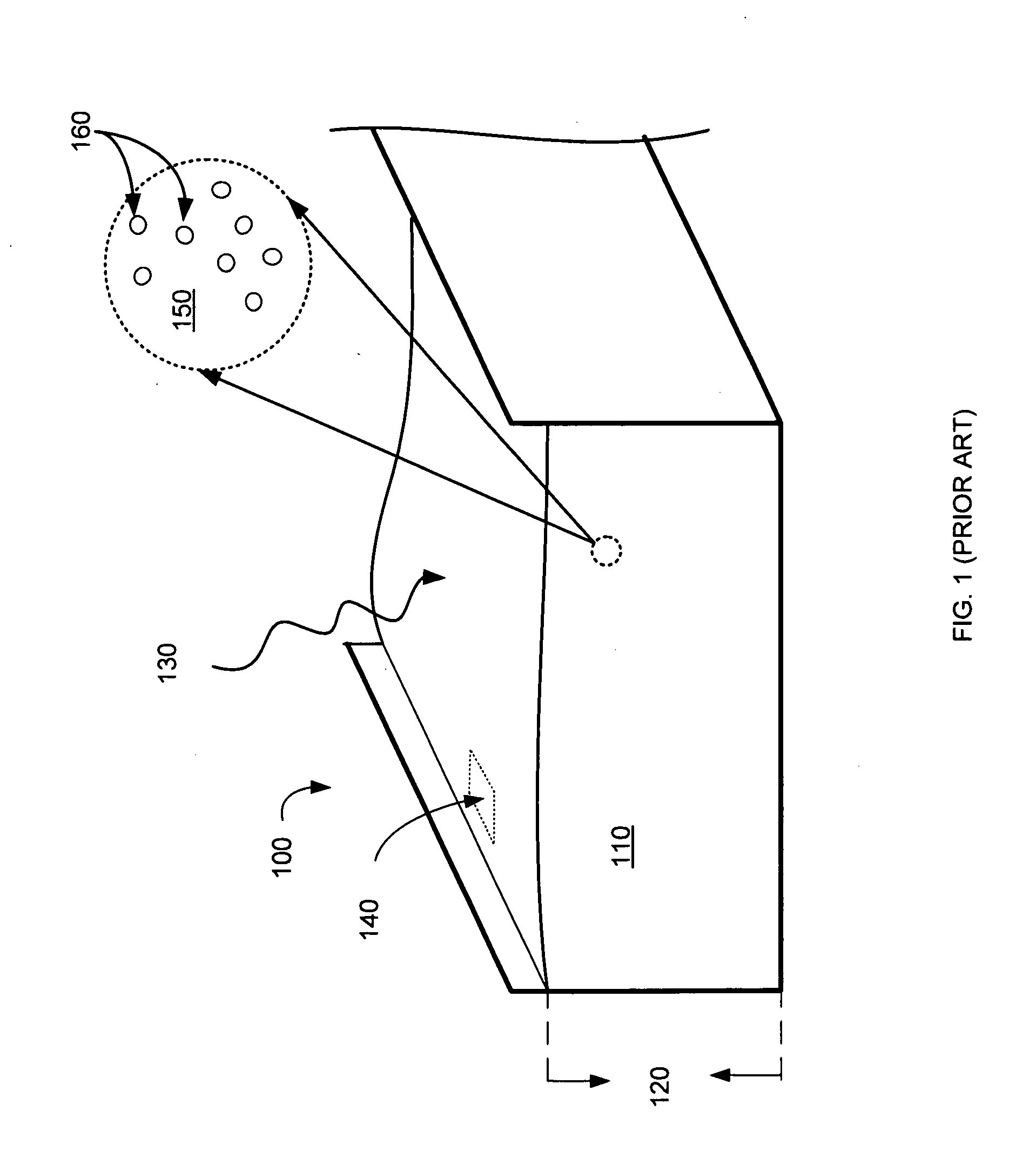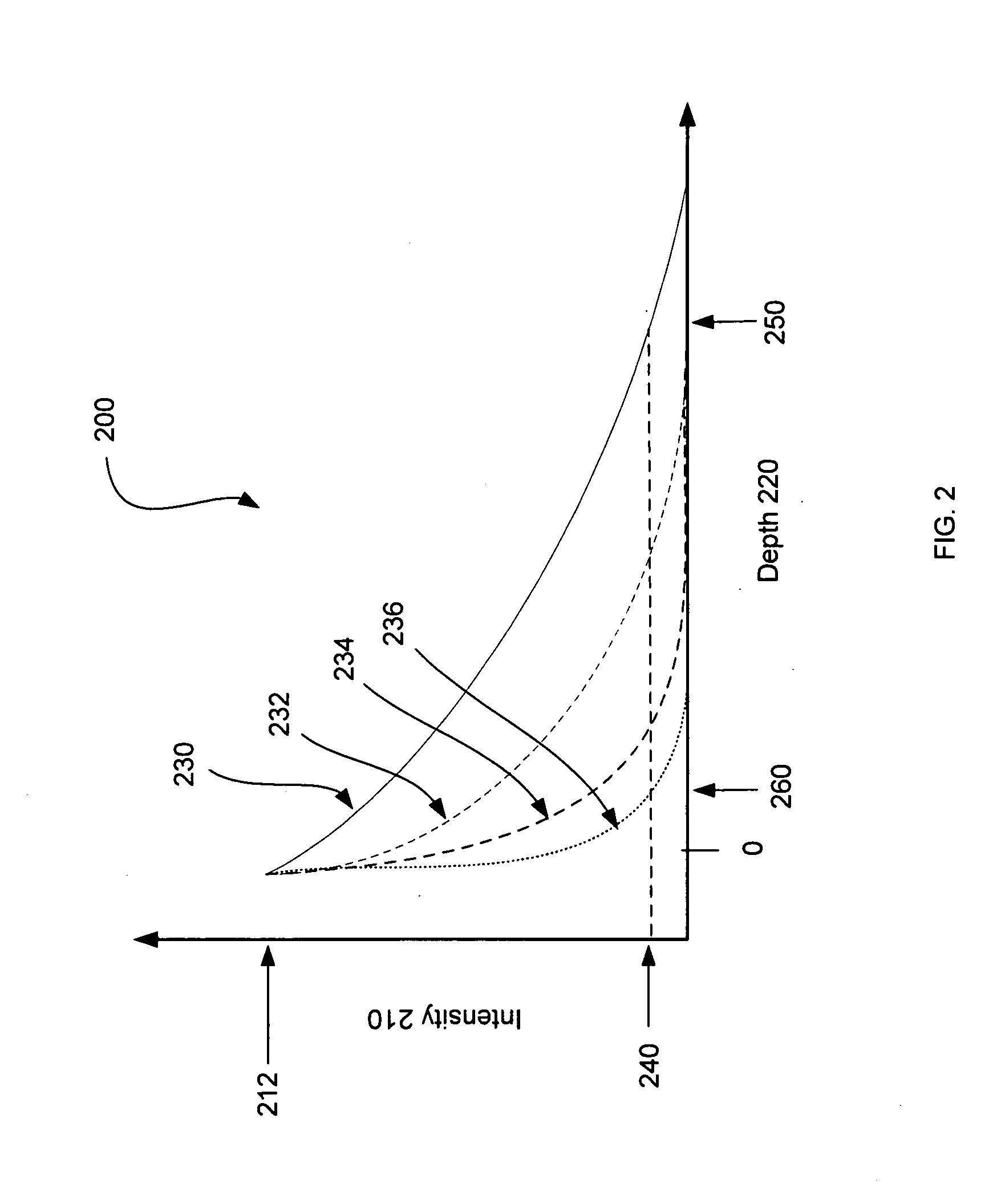Optimization of Response to Light
a technology of light and response, applied in the field of exposing substances, can solve the problems of algae at a substantial depth below the surface that may not receive enough sunlight, and uncontrolled exposure may not yield optimal reaction kinetics
- Summary
- Abstract
- Description
- Claims
- Application Information
AI Technical Summary
Benefits of technology
Problems solved by technology
Method used
Image
Examples
Embodiment Construction
[0021]Various aspects provide for optimizing the exposure of a substance to light. Certain aspects include exposing a suspension of photosynthetic organisms to sunlight, and may include optimizing exposure to improve photosynthesis conditions. Optimizing exposure may include maximizing growth rate, maximizing photosynthesis efficiency, maximizing production of a chemical (e.g., a triglyceride), minimizing damage, minimizing predator growth, maximizing a capacity to grow in suboptimal media (e.g., polluted water, brackish water, or water having a pH outside of a preferable range), minimizing requirements for nutrients, and other features.
[0022]A suspension may comprise a suspended phase and a liquid. A suspended phase may be a solid, a liquid, a composite, or another phase. In some cases, suspended phases may include small particles (e.g., less than 100 microns, less than 10 microns, less than 1 micron, or even less than 100 nm). A suspension may comprise one or more photosynthetic o...
PUM
 Login to View More
Login to View More Abstract
Description
Claims
Application Information
 Login to View More
Login to View More - R&D
- Intellectual Property
- Life Sciences
- Materials
- Tech Scout
- Unparalleled Data Quality
- Higher Quality Content
- 60% Fewer Hallucinations
Browse by: Latest US Patents, China's latest patents, Technical Efficacy Thesaurus, Application Domain, Technology Topic, Popular Technical Reports.
© 2025 PatSnap. All rights reserved.Legal|Privacy policy|Modern Slavery Act Transparency Statement|Sitemap|About US| Contact US: help@patsnap.com



